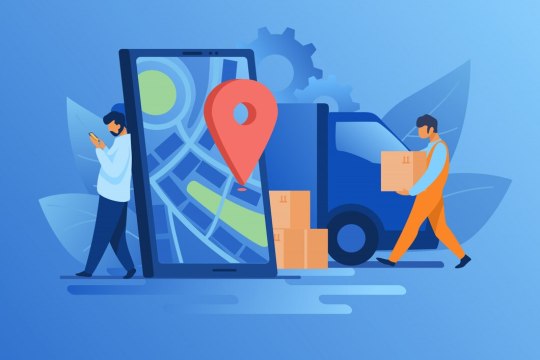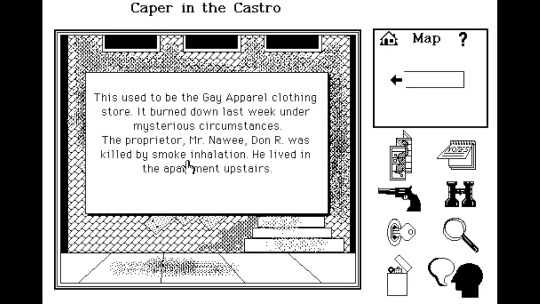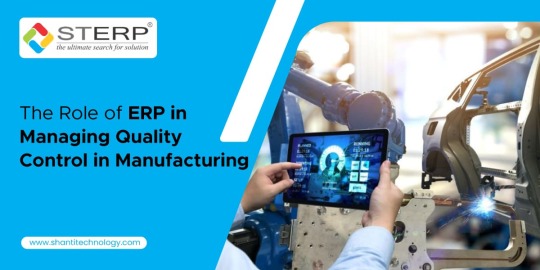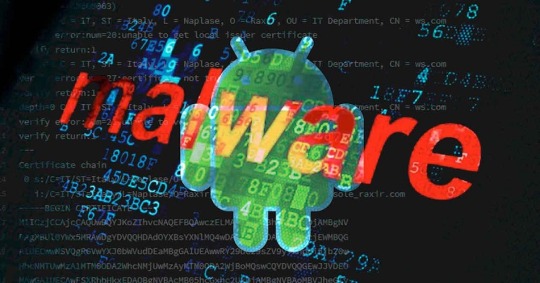#End-to-End Software Supply Chain
Explore tagged Tumblr posts
Link
The intelligent software delivery (ISD) automates security checks for attack vectors and eliminates vulnerabilities in your software release and delivery process. This blog provides insights into these attack vectors, corresponding checks and how to apply them.
#CloudOps#DevOps#End-to-End Software Supply Chain#Engineering#Secure Software Delivery#Secure Software Release#Security Breaches
0 notes
Text
Elevating Excellence: Why the Transportation and Logistics Industry Should Prioritize Enhanced Customer Service
In the fast-paced and competitive realm of transportation and logistics, the emphasis on enhanced customer service is becoming increasingly vital. This blog post delves into the reasons why the transportation and logistics industry should prioritize customer service, exploring how it can lead to increased customer satisfaction, improved operational efficiency, and a strengthened market position.

Transportation Customer Service:
Transportation customer service underscores the unique challenges and opportunities within the transportation sector. Acknowledging the specific needs of customers in the logistics chain is crucial for building lasting relationships and ensuring a positive overall experience.
Customer Support Management:
The customer support management highlights the strategic approach required to deliver exceptional customer service. Effective management of customer support processes, from order inquiries to issue resolution, is instrumental in meeting and exceeding customer expectations.
Multilingual Customer Support:
In an increasingly globalized world, the term Multilingual customer support becomes pivotal. Offering customer support in multiple languages is not just a convenience; it is a necessity in a diverse and interconnected marketplace. Multilingual customer support enhances accessibility, fosters international collaboration, and demonstrates a commitment to meeting the unique needs of a global customer base.
Reasons to Prioritize Enhanced Customer Service:
Customer Satisfaction: A focus on enhanced customer service directly correlates with increased customer satisfaction. By providing prompt and accurate information, addressing concerns proactively, and ensuring a seamless experience, businesses build trust and loyalty among their clientele.
Operational Efficiency: Streamlining customer support management contributes to operational efficiency. Resolving issues promptly, minimizing order discrepancies, and optimizing communication channels lead to smoother logistics operations and reduced disruptions.
Competitive Edge: In an industry where competition is fierce, superior customer service becomes a key differentiator. Companies that prioritize customer satisfaction gain a competitive edge, attracting and retaining clients in a market where service quality often defines success.
Brand Reputation: Customer service plays a crucial role in shaping a brand's reputation. Positive interactions with customers contribute to a positive brand image, while subpar customer service can lead to reputational damage. A strong brand reputation, built on excellent customer service, enhances market credibility and trust.
Conclusion: In conclusion, prioritizing enhanced customer service in the transportation and logistics industry is not just a matter of meeting expectations; it is a strategic imperative. From transportation customer service tailored to the unique needs of the industry to effective customer support management and multilingual support for a global clientele, the benefits are manifold. By placing customer satisfaction at the forefront, businesses in the transportation and logistics sector can navigate challenges, foster growth, and secure a prominent position in an ever-evolving and competitive marketplace. In a world where customer-centricity is paramount, elevating customer service becomes a pathway to sustained success and industry leadership.
#Transportation customer service#customer support management#Multilingual customer support#Trucking Dispatch Companies#Bpo services#Support center#Support ticket system#Live chat support#Online support#Customer support software#Healthcare bpo#Healthcare business process outsourcing#load board outsourcing#end to end supply chain#Data entry outsourcing#Business process outsourcing companies#Customer support outsourcing#claim managament#Bpo solutions#Customer support solutions#Customer support chat#supply chain outsourcing#Back office outsourcing#Customer support team#back office outsourcing services#carrier onboarding#logistics control tower#Offshore bpo#transporation customer service#Customer support ticket
0 notes
Text
Enhance Efficiency with ETA Logistical Solutions by Cozentus
Experience streamlined logistics and supply chain management with Cozentus' cutting-edge ETA Logistical Solutions. Our robust solutions and a team of experts work seamlessly to optimize your operations and boost productivity.
With real-time tracking and accurate ETA predictions, you can stay ahead of deliveries and minimize delays. Cozentus' ETA Logistical Solutions enables you to make informed decisions, plan efficiently, and provide exceptional customer service.
From route optimization to resource management, our comprehensive suite of solutions is designed to meet the diverse needs of your business. Trust in Cozentus' expertise to enhance efficiency, reduce costs, and gain a competitive edge in the industry.
Don't miss the opportunity to revolutionize your logistics. Contact Cozentus today and discover the power of ETA Logistical Solutions to transform your business. Your success is our priority!
Cozentus Technologies Pvt. Ltd:
Head Office: SRB Tower, 5th and 6th Floor,
Infocity, Bhubaneswar-751024, Odisha, India
Call: +91 977 712 6600
Mail: [email protected]
#supply chain visibility solutions#eta logistical solutions#real time supply chain visibility#demand forecasting in supply chain management#supply chain management software#end to end supply chain planning#demand planning in supply chain#data science for supply chain forecast#supply chain predictive analytics#machine learning in supply chain
0 notes
Text
Dandelion News - November 15-21
Like these weekly compilations? Tip me at $kaybarr1735 or check out my Dandelion Doodles! (sorry it's slightly late, the links didn't wanna work and I couldn't figure it out all day)
1. Wyoming's abortion ban has been overturned, including its ban on abortion medication

“Wyoming is the second state to have its near-total abortion ban overturned this month[…. Seven other states] also approved amendments protecting the right to an abortion. A lawsuit seeking to challenge the [FDA]’s approval of abortion medication recently failed when the Supreme Court refused to hear it[….]”
2. Patches of wildflowers in cities can be just as good for insects as natural meadows – study

“This study confirmed that small areas of urban wildflowers have a high concentration of pollinating insects, and are as valuable to many pollinators as larger areas of natural meadow that you would typically find rurally.”
3. Paris could offer new parents anti-pollution baby 'gift bags' to combat 'forever chemicals'

“The bag includes a stainless steel baby cup, a wooden toy, reusable cotton wipes, and non-toxic cleaning supplies as part of a "green prescription". […] The city will also have 44 centres for protecting mothers and infants that will be without any pollutants[….]”
4. Indigenous guardians embark on a sacred pact to protect the lowland tapir in Colombia

“The tapir is now the focus of an Indigenous-led conservation project[… A proposed “biocultural corridor”] will protect not only the populations and movements of wildlife such as tapirs, but also the cultural traditions and spirituality of the Inga and other neighboring Indigenous peoples[….]”
5. Denmark will plant 1 billion trees and convert 10% of farmland into forest

“[…] 43 billion kroner ($6.1 billion) have been earmarked to acquire land from farmers over the next two decades[.… In addition,] livestock farmers will be taxed for the greenhouse gases emitted by their cows, sheep and pigs from 2030, the first country to do so[….]”
6. The biggest grid storage project using old batteries is online in Texas

“[Element operates “used EV battery packs” with software that can] fine-tune commands at the cell level, instead of treating all the batteries as a monolithic whole. This enables the system to get more use out of each cell without stressing any so much that they break down[….]””
7. Durable supramolecular plastic is fully ocean-degradable and doesn't generate microplastics

“The new material is as strong as conventional plastics and biodegradable, [… and] is therefore expected to help reduce harmful microplastic pollution that accumulates in oceans and soil and eventually enters the food chain.”
8. Big Oil Tax Could Boost Global Loss and Damage Fund by 2000%

“[… A] tax on fossil fuel extraction, which would increase each year, combined with additional taxes on excess profits would […] generate hundreds of billions of dollars by the end of the decade to assist poor and vulnerable communities with the impact of the climate crisis[….]”
9. Rooftop solar meets 107.5 pct of South Australia’s demand, no emergency measures needed

“[T]he state was able to export around 658 MW of capacity to Victoria at the time[….] The export capacity is expected to increase significantly as the new transmission link to NSW[…] should be able to allow an extra 150 MW to be transferred in either direction by Christmas.”
10. Light-altering paint for greenhouses could help lengthen the fruit growing season in less sunny countries

“[Scientists] have developed a spray coating for greenhouses that could help UK farmers to produce more crops in the future using the same or less energy[… by optimising] the wavelength of light shining onto the plants, improving their growth and yield.”
November 8-14 news here | (all credit for images and written material can be found at the source linked; I don’t claim credit for anything but curating.)
#hopepunk#good news#abortion#abortion rights#reproductive rights#pollinators#guerrilla gardening#wildflowers#paris#babies#new parents#tapir#indigenous#denmark#reforestation#electric vehicles#energy storage#plastic#microplastics#biodegradable#fossil fuels#solar panels#gardening#solar energy#solar power#nature#us politics#technology#australia#uk
139 notes
·
View notes
Text
The long sleep of capitalism’s watchdogs

There are only five more days left in my Kickstarter for the audiobook of The Bezzle, the sequel to Red Team Blues, narrated by @wilwheaton! You can pre-order the audiobook and ebook, DRM free, as well as the hardcover, signed or unsigned. There's also bundles with Red Team Blues in ebook, audio or paperback.

One of the weirdest aspect of end-stage capitalism is the collapse of auditing, the lynchpin of investing. Auditors – independent professionals who sign off on a company's finances – are the only way that investors can be sure they're not handing their money over to failing businesses run by crooks.
It's just not feasible for investors to talk to supply-chain partners and retailers and verify that a company's orders and costs are real. Investors can't walk into a company's bank and demand to see their account histories. Auditors – who are paid by companies, but work for themselves – are how investors avoid shoveling money into Ponzi-pits.
Attentive readers will have noticed that there is an intrinsic tension in an arrangement where someone is paid by a company to certify its honesty. The company gets to decide who its auditors are, and those auditors are dependent on the company for future business. To manage this conflict of interest, auditors swear fealty to a professional code of ethics, and are themselves overseen by professional boards with the power to issue fines and ban cheaters.
Enter monopolization. Over the past 40 years, the US government conducted a failed experiment in allowing companies to form monopolies on the theory that these would be "efficient." From Boeing to Facebook, Cigna to InBev, Warner to Microsoft, it has been a catastrophe. The American corporate landscape is dominated by vast, crumbling, ghastly companies whose bad products and worse corporate conduct are locked in a race to see who can attain the most depraved enshittification quickest.
The accounting profession is no exception. A decades-long incestuous orgy of mergers and acquisitions yielded up an accounting sector dominated by just four firms: EY, KPMG, PWC and Deloitte (the last holdout from the alphabetsoupification of corporate identity). Virtually every major company relies on one of these companies for auditing, but that's only a small part of corporate America's relationship with these tottering behemoths. The real action comes from "consulting."
Each of the Big Four accounting firms is also a corporate consultancy. Some of those consulting services are the normal work of corporate consultants – cookie cutter advice to fire workers and reduce product quality, as well as supplying dangerously defecting enterprise software. But you can get that from the overpaid enablers at McKinsey or BCG. The advantage of contracting with a Big Four accounting firm for consulting is that they can help you commit finance fraud.
Remember: if you're an executive greenlighting fraud, you mostly just want to be sure it's not discovered until after you've pocketed your bonus and moved on. After all, the pro-monopoly experiment was also an experiment in tolerating corporate crime. Executives who cheat their investors, workers and suppliers typically generate fines for their companies, while escaping any personal liability.
By buying your cheating advice from the same company that is paid to certify that you're not cheating, you greatly improve your chances of avoiding detection until you've blown town.
Which brings me to the idea of the "bezzle." This is John Kenneth Galbraith's term for "the weeks, months, or years that elapse between the commission of the crime and its discovery." This is the period in which both the criminal and the victim feel like they're better off. The crook has the victim's money, and the victim doesn't know it. The Bezzle is that interval when you're still assuming that FTX isn't lying to you about the crazy returns they're generating for your crypto. It's the period between you getting the shrinkwrapped box with a 90% discounted PS5 in it from a guy in an alley, and getting home and discovering that it's full of bricks and styrofoam.
Big Accounting is a factory for producing bezzles at scale. The game is rigged, and they are the riggers. When banks fail and need a public bailout, chances are those banks were recently certified as healthy by one of the Big Four, whose audited bank financials failed 800 re-audits between 2009-17:
https://pluralistic.net/2020/09/28/cyberwar-tactics/#aligned-incentives
The Big Four dispute this, of course. They claim to be models of probity, adhering to the strictest possible ethical standards. This would be a lot easier to believe if KPMG hadn't been caught bribing its regulators to help its staff cheat on ethics exams:
https://www.nysscpa.org/news/publications/the-trusted-professional/article/sec-probe-finds-kpmg-auditors-cheating-on-training-exams-061819
Likewise, it would be easier to believe if their consulting arms didn't keep getting caught advising their clients on how to cheat their auditing arms:
https://pluralistic.net/2023/05/09/dingo-babysitter/#maybe-the-dingos-ate-your-nan
Big Accounting is a very weird phenomenon, even by the standards of End-Stage Capitalism. It's an organized system of millionaire-on-billionaire violence, a rare instance of the very richest people getting scammed the hardest:
https://pluralistic.net/2021/06/04/aaronsw/#crooked-ref
The collapse of accounting is such an ominous and fractally weird phenomenon, it inspired me to write a series of hard-boiled forensic accountancy novels about a two-fisted auditor named Martin Hench, starting with last year's Red Team Blues (out in paperback next week!):
https://us.macmillan.com/books/9781250865854/redteamblues
The sequel to Red Team Blues is called (what else?) The Bezzle, and part of its ice-cold revenge plot involves a disillusioned EY auditor who can't bear to be part of the scam any longer:
https://www.kickstarter.com/projects/doctorow/the-bezzle-a-martin-hench-audiobook-amazon-wont-sell
The Hench stories span a 40-year period, and are a chronicle of decades of corporate decay. Accountancy is the perfect lens for understanding our modern fraud economy. After all, it was crooked accountants who gave us the S&L crisis:
https://scholarworks.umt.edu/cgi/viewcontent.cgi?article=10130&context=etd
Crooked auditors were at the center of the Great Financial Crisis, too:
https://francinemckenna.com/2009/12/07/they-werent-there-auditors-and-the-financial-crisis/
And of course, crooked auditors were behind the Enron fraud, a rare instance in which a fraud triggered a serious attempt to prevent future crimes, including the destruction of accounting giant Arthur Andersen. After Enron, Congress passed Sarbanes-Oxley (SOX), which created a new oversight board called the Public Company Accounting Oversight Board (PCAOB).
The PCAOB is a watchdog for watchdogs, charged with auditing the auditors and punishing the incompetent and corrupt among them. Writing for The American Prospect and the Revolving Door Project, Timi Iwayemi describes the long-running failure of the PCAOB to do its job:
https://prospect.org/power/2024-01-26-corporate-self-oversight/
For example: from 2003-2019, the PCAOB undertook only 18 enforcement cases – even though the PCAOB also detected more than 800 "seriously defective audits" by the Big Four. And those 18 cases were purely ornamental: the PCAOB issued a mere $6.5m in fines for all 18, even though they could have fined the accounting companies $1.6 billion:
https://www.pogo.org/investigations/how-an-agency-youve-never-heard-of-is-leaving-the-economy-at-risk
Few people are better on this subject than the investigative journalist Francine McKenna, who has just co-authored a major paper on the PCAOB:
https://papers.ssrn.com/sol3/papers.cfm?abstract_id=4227295
The paper uses a new data set – documents disclosed in a 2019 criminal trial – to identify the structural forces that cause the PCAOB to be such a weak watchdog whose employees didn't merely fail to do their jobs, but actually criminally abetted the misdeeds of the companies they were supposed to be keeping honest.
They put the blame – indirectly – on the SEC. The PCAOB has three missions: protecting investors, keeping markets running smoothly, and ensuring that businesses can raise capital. These missions come into conflict. For example, declaring one of the Big Four auditors ineligible would throw markets into chaos, removing a quarter of the auditing capacity that all public firms rely on. The Big Four are the auditors for 99.7% of the S&P 500, and certify the books for the majority of all listed companies:
https://blog.auditanalytics.com/audit-fee-trends-of-sp-500/
For the first two decades of the PCAOB's existence, the SEC insisted that conflicts be resolved in ways that let the auditing firms commit fraud, because the alternative would be bad for the market.
So: rather than cultivating an adversarial relationship to the Big Four, the PCAOB effectively merged with them. Two of its board seats are reserved for accountants, and those two seats have been occupied by Big Four veterans almost without exception:
https://www.pogo.org/investigations/captured-financial-regulator-at-risk
It was no better on the SEC side. The Office of the Chief Accountant is the SEC's overseer for the PCAOB, and it, too, has operated with a revolving door between the Big Four and their watchdog (indeed, the Chief Accountant is the watchdog for the watchdog for the watchdogs!). Meanwhile, staffers from the Office of the Chief Accountant routinely rotated out of government service and into the Big Four.
This corrupt arrangement reached a crescendo in 2019, with the appointment of William Duhnke – formerly of Senator Richard Shelby's [R-AL] staff – took over as Chief Accountant. Under Duhnke's leadership, the already-toothless watchdog was first neutered, then euthanized. Duhnke fired all four heads of the PCAOB's main division and then left their seats vacant for 18 months. He slashed the agency's budget, "weakened inspection requirements and auditor independence policies, and disregarded obligations to hold Board meetings and publicize its agenda."
All that ended in 2021, when SEC chair Gary Gensler fired Duhnke and replaced him with Erica Williams, at the insistence of Bernie Sanders and Elizabeth Warren. Within a year, Williams had issued 42 enforcement actions, the largest number since 2017, levying over $11m in sanctions:
https://www.dlapiper.com/en/insights/publications/2023/01/pcaob-sets-aggressive-agenda-for-2023-what-to-expect-as-agency-enforcement-expands
She was just getting warmed up: last year, PCAOB collected $20m in fines, with five cases seeing fines in excess of $2m each, a record:
https://www.dlapiper.com/en/insights/publications/2024/01/pcaobs-enforcement-and-standard-setting-rev-up-what-to-expect-in-2024
Williams isn't shy about condemning the Big Four, publicly sounding the alarm that 40% of the 2022 audits the PCAOB reviewed were deficient, up from 34% in 2021 and 29% in 2020:
https://www.wsj.com/articles/we-audit-the-auditors-and-we-found-trouble-accountability-capital-markets-c5587f05
Under Williams, the PCAOB has enacted new, muscular rules on lead auditors' duties, and they're now consulting on a rule that will make audit inspections much faster, shortening the documentation period from 45 days to 14:
https://tax.thomsonreuters.com/news/pcaob-rulemaking-could-lead-to-more-timely-issuance-of-audit-inspection-reports/
Williams is no fire-breathing leftist. She's an alum of the SEC and a BigLaw firm, creating modest, obvious technical improvements to a key system that capitalism requires for its orderly functioning. Moreover, she is competent, able to craft regulations that are effective and enforceable. This has been a motif within the Biden administration:
https://pluralistic.net/2022/10/18/administrative-competence/#i-know-stuff
But though these improvements are decidedly moderate, they are grounded in a truly radical break from business-as-usual in the age of monopoly auditors. It's a transition from self-regulation to regulation. As @40_Years on Twitter so aptly put it: "Self regulation is to regulation as self-importance is to importance":
https://twitter.com/40_Years/status/1750025605465178260

Berliners: Otherland has added a second date (Jan 28 - THIS SUNDAY!) for my book-talk after the first one sold out - book now!

If you'd like an essay-formatted version of this post to read or share, here's a link to it on pluralistic.net, my surveillance-free, ad-free, tracker-free blog:
https://pluralistic.net/2024/01/26/noclar-war/#millionaire-on-billionaire-violence


Back the Kickstarter for the audiobook of The Bezzle here!

Image: Sam Valadi (modified) https://www.flickr.com/photos/132084522@N05/17086570218/
Disco Dan (modified)
https://www.flickr.com/photos/danhogbenspics/8318883471/
CC BY 2.0: https://creativecommons.org/licenses/by/2.0/
#pluralistic#big accounting#auditing#marty hench#martin hench#big four accountants#management consultants#corruption#millionaire on billionaire violence#long cons#the bezzle#conflicts of interest#revolving door#self-regulation#gaap#sox#sarbanes-oxley#too big to fail#too big to jail#audits#defective audits#Public Company Accounting Oversight Board#pcaob#sec#scholarship#Francine McKenna#William Duhnke#administrative competence#photocopier kickers#NOCLARs
67 notes
·
View notes
Text
Green Mining brings “post-consumer packaging back to the supply chain,” Rodrigo explains. The idea is to divert packaging from landfills to be returned to the manufacturer for reuse or recycling.
The startup’s waste finder software uses sales data to identify hot spots, where a large amount of post-consumer waste — such as beer bottles — is being generated. These are typically areas with a high density of bars and restaurants. Green Mining then installs a collection hub nearby. Collectors pick up the waste and bring it back to the hub, where it’s sorted.
“As the system tracks every movement from the bar to the recycling plant, we are able to [certify] this reverse logistic supported by blockchain technology and with an end-to end compliance,” Rodrigo explains.
For AB InBev, Green Mining’s idea provides a way to achieve circular packaging. For Green Mining, the experience of piloting with AB InBev through the accelerator allowed the trio’s idea to “be taken [off] of the paper and become real.”
10 notes
·
View notes
Text
Queer Gaming History- Caper in the Castro

We are thankfully in an era where there are more openly LGBT characters in video games than ever before. Just looking at the list of known queer video game characters on Wikipedia shows how much progress we've made with the early days being organized by decade and recent times being organized by individual year.
Since it's Pride Month, I'd like to talk about one of the earliest pieces of LGBT representation within video games and just why it was created.
This is 1989's Caper in the Castro. You can now play it for free here.
Just as a warning, the language used within the game is very much dated to the 80s. I don't mean this with just 80s slang, I mean that you're gonna see words that are considered slurs nowadays.

Caper in the Castro was developed and released during the height of the AIDS epidemic. While it was released for free, it was considered a piece of software known as charityware. Unlike other freeware, charityware is distributed as a method of encouraging downloaders to donate money to a certain cause. In this case, Caper in the Castro was made to raise money for those suffering from the AIDS epidemic.
We'll get more into how the AIDS epidemic influences the game in a bit. I think I should also show you guys what the game's about.

The above screenshot sets the scene pretty well. It's a short point and click adventure game where you have to save your friend, Tessy, from the evil Straightman. It's about a fifteen minute playthrough with a few fun ways to get yourself killed or arrested (as is the adventure game tradition).
You're limited to the few buildings on the city streets, but you can mostly tackle them in any order you want. You don't have to pick up specific items, just notes which last even if you die. The death screen is pretty iconic by the way.

Deja Vu? Who is she? There is no Ace Harding, just Tracker McDyke.
Tracker McDyke is wonderful by the way. Yes you can pick locks, but you're gonna solve most of your lock problems by just shooting them. Gunshots are just background noise in this neighborhood, nobody gives a shit and neither should you.
You can also look at a lady showering and she'll say a happy "hey~" to you!

There's no reason for this. Sometimes it's just nice for Detective McDyke to look at a sideboob and butt.
It's not all butts and boob however. While the story is short, the surroundings tell a true reflection of what the queer community went through during that time (and sadly still does on a different scale).

We're going back to talking about the AIDS crisis now, because the very idea of the game was based on the cruel reality C.M. Ralph experienced. It was normal for many in the queer community to just have friends disappear and never be found. Many families wouldn't claim those who were found and same sex partners weren't given spousal rights.
In Caper in the Castro though, you can save your friend.

Tessy is found unharmed toward the end of the game and it's easy to free her. You get to be a badass and shoot her chains off before burning the whole place down.
As I type this, I think about what a lovely role you get to play in this game. You play as a gun toting lesbian that takes down the evil Straightman, save your missing drag queen friend, then burn down all of Straightman's supplies.
If this game came out today, people would say it's inciting violence against straight people- Wait a minute! There was a censored release!

C.M. Ralph did put out a commercial release for Caper in the Castro called Murder on Main Street! It takes out everything queer in order to appeal to a publisher. I can't be mad though because you do what you have to in order to get that bag and let's be real.
There's no way in hell a publisher would've taken this.

Caper in the Castro itself is named after San Francisco's historically gay neighborhood, the Castro. While many have found a community among their queer peers, many places within were under threats and violent acts.
The scenario presented within the game can only be solved by members of the community. The police can't help you, only a lesbian with a gun can. We as a community need to support each other, especially with how things have been going in 2023.

I wanted to talk about this game for pride month not just because it's an important part of gaming history. To me, it represents the reason we celebrate pride.
Because there's a scene in the game where you walk into a diner and see two gay couples just having a comfortable late night meal.

And I think about how we deserve this comfortable happiness for many decades to come.
...and this game also gives us the "fantasy" of burning down the establishments of those who want to kill us.
Happy pride everyone. I hope you're all safe and surrounded by people you love and also love you in return.
78 notes
·
View notes
Text
Imposing Duties to Address the Synthetic Opioid Supply Chain in the People's Republic of China
Issued February 1, 2025.
By the authority vested in me as President by the Constitution and the laws of the United States of America, including the International Emergency Economic Powers Act (50 U.S.C. 1701 et seq.) (IEEPA), the National Emergencies Act (50 U.S.C. 1601 et seq.) (NEA), section 604 of the Trade Act of 1974, as amended (19 U.S.C. 2483), and section 301 of title 3, United States Code,
I, DONALD J. TRUMP, President of the United States of America, find that the sustained influx of synthetic opioids has profound consequences on our Nation, including by killing approximately two hundred Americans per day, putting a severe strain on our healthcare system, ravaging our communities, and destroying our families. Synthetic opioid overdose is the leading cause of death for people aged 18 to 45 in the United States.
During my first term, I took steps to end the direct flow of fentanyl and other synthetic opioids from the People's Republic of China (PRC) to the United States. Since then, the Chinese Communist Party (CCP), which exerts ultimate control over the government and enterprises of the PRC, has subsidized and otherwise incentivized PRC chemical companies to export fentanyl and related precursor chemicals that are used to produce synthetic opioids sold illicitly in the United States.
Furthermore, the PRC provides support to and safe haven for PRC-origin transnational criminal organizations (TCOs) that launder the revenues from the production, shipment, and sale of illicit synthetic opioids. These PRC-origin TCOs coordinate and communicate using PRC social media software applications in the conduct of their businesses.
Many PRC-based chemical companies also go to great lengths to evade law enforcement and hide illicit substances in the flow of legitimate commerce. Some of the techniques employed by these PRC-based companies to conceal the true contents of the parcels and the identity of the distributors include the use of re-shippers in the United States, false invoices, fraudulent postage, and deceptive packaging. While more than 500,000 pounds of drugs have been seized at the southern border each of the last 3 fiscal years, in addition, more than 42,000 pounds of drugs have been seized at the northern border each year on average over the last 3 years. Illicit drugs kill tens of thousands of Americans each year, including 75,000 deaths per year attributed to fentanyl alone.
The influx of these drugs to our Nation threatens the fabric of our society. The PRC plays a central role in this challenge, not merely by failing to stem the ultimate source of many illicit drugs distributed in the United States, but by actively sustaining and expanding the business of poisoning our citizens.
The flow of contraband drugs like fentanyl to the United States through illicit distribution networks has created a national emergency, including a public health crisis in the United States, as outlined in the Presidential Memorandum of January 20, 2025 (America First Trade Policy), Proclamation 10886 of January 20, 2025 (Declaring a National Emergency at the Southern Border of the United States), and Executive Order 14157 of January 20, 2025 (Designating Cartels and Other Organizations as Foreign Terrorist Organizations and Specially Designated Global Terrorists).
Despite multiple attempts to resolve this crisis at its root source through bilateral dialogue, PRC officials have failed to follow through with the decisive actions needed to stem the flow of precursor chemicals to known criminal cartels and shut down the money laundering TCOs. The PRC implements the most sophisticated domestic surveillance network coupled with the most comprehensive domestic law enforcement apparatus in the world. The PRC also routinely exerts extraterritorial reach across the globe to threaten, harass, and suppress what it views as political dissent. As such, the CCP does not lack the capacity to severely blunt the global illicit opioid epidemic; it simply is unwilling to do so.
Immediate action is required to address the national emergency I declared to finally end this emergency, including the public health crisis caused by opioid use and addiction, which will not happen until the full compliance and cooperation of the PRC government is assured.
I hereby determine and order:
Section 1. (a) As President of the United States, my highest duty is the defense of the country and its citizens. I will not stand by and allow our citizens to be poisoned, our laws to be trampled, our communities to be ravaged, or our families to be destroyed.
I previously declared a national emergency with respect to the grave threat to the United States posed by the influx of illegal aliens and drugs into the United States in Proclamation 10886. Pursuant to the NEA, I hereby expand the scope of the national emergency declared in that proclamation to cover the failure of the PRC government to arrest, seize, detain, or otherwise intercept chemical precursor suppliers, money launderers, other TCOs, criminals at large, and drugs. In addition, this failure to act constitutes an unusual and extraordinary threat, which has its source in substantial part outside the United States, to the national security, foreign policy, and economy of the United States. I hereby declare and reiterate a national emergency under the NEA and IEEPA to deal with that threat. This national emergency requires decisive and immediate action, and I have decided to impose, consistent with law, ad valorem tariffs on articles that are products of the PRC as set forth in this order. In doing so, I invoke my authority under section 1702(a)(1)(B) of IEEPA, and specifically find that action under other authority to impose tariffs is inadequate to address this unusual and extraordinary threat.
Sec. 2. (a) All articles that are products of the PRC, as defined by the Federal Register notice described in section 2(d) of this order (the Federal Register notice), shall be, consistent with law, subject to an additional 10 percent ad valorem rate of duty. Such rate of duty shall apply with respect to goods entered for consumption, or withdrawn from warehouse for consumption, on or after 12:01am eastern time on February 4, 2025, except that goods entered for consumption, or withdrawn from warehouse for consumption, after such time that were loaded onto a vessel at the port of loading or in transit on the final mode of transport prior to entry into the United States before 12:01am eastern time on February 1, 2025, shall not be subject to such additional duty, only if the importer certifies to U.S. Customs and Border Protection within the Department of Homeland Security as specified in the Federal Register notice.
(b) The rates of duty established by this order are in addition to any other duties, fees, exactions, or charges applicable to such imported articles.
(c) Should the PRC retaliate against the United States in response to this action through import duties on United States exports to the PRC or similar measures, the President may increase or expand in scope the duties imposed under this Executive Order to ensure the efficacy of this action.
(d) In order to establish the duty rate on imports of articles that are products of the PRC, the Secretary of Homeland Security shall determine the modifications necessary to the Harmonized Tariff Schedule of the United States (HTSUS) in order to effectuate this order consistent with law and shall make such modifications to the HTSUS through notice in the Federal Register. The modifications made to the HTSUS by this notice shall be effective with respect to goods entered for consumption, or withdrawn from warehouse for consumption, on or after 12:01am eastern time on February 4, 2025, except as otherwise noted in subsection 2(a) of this section, and shall continue in effect until such actions are expressly reduced, modified, or terminated.
(e) Articles that are products of the PRC, except those that are eligible for admission under "domestic status" as defined in 19 CFR 146.43, which are subject to the duties imposed by this order and are admitted into a United States foreign trade zone on or after 12:01am eastern time on February 4, 2025, except as otherwise noted in subsection 2(a) of this section, must be admitted as "privileged foreign status" as defined in 19 CFR 146.41. Such articles will be subject upon entry for consumption to the rates of duty related to the classification under the applicable HTSUS subheading in effect at the time of admittance into the United States foreign trade zone.
(f) No drawback shall be available with respect to the duties imposed pursuant to this order.
(g) For avoidance of doubt, duty-free de minimis treatment under 19 U.S.C. 1321 shall not be available for the articles described in subsection (a) of this section.
(h) Any prior Presidential Proclamation, Executive Order, or other presidential directive or guidance related to trade with the PRC that is inconsistent with the direction in this order is hereby terminated, suspended, or modified to the extent necessary to give full effect to this order.
(i) The articles described in subsection (a) of this section shall include those encompassed by 50 U.S.C. 1702(b).
Sec. 3. (a) The Secretary of Homeland Security shall regularly consult with the Secretary of State, the Attorney General, the Assistant to the President for National Security Affairs, and the Assistant to the President for Homeland Security on the situation regarding the PRC. The Secretary of Homeland Security shall inform the President of any circumstances that, in the opinion of the Secretary of Homeland Security, indicate that the PRC government has taken adequate steps to alleviate the opioid crisis through cooperative actions. Upon the President's determination of sufficient action to alleviate the crisis, the tariffs described in section 2 of this order will be removed.
(b) The Secretary of Homeland Security, in coordination with the Secretary of State, the Attorney General, the Assistant to the President for National Security Affairs, and the Assistant to the President for Homeland Security shall recommend additional action, if necessary, should the PRC fail to take adequate steps to alleviate the illicit drug crises through cooperative enforcement actions.
Sec. 4. The Secretary of Homeland Security, in consultation with the Secretary of the Treasury, the Attorney General, and the Secretary of Commerce, is hereby authorized to take such actions, including adopting rules and regulations, and to employ all powers granted to me by IEEPA as may be necessary to implement this order. The Secretary of Homeland Security may, consistent with applicable law, redelegate any of these functions within the Department of Homeland Security. All agencies shall take all appropriate measures within their authority to implement this order.
Sec. 5. The Secretary of Homeland Security, in coordination with the Secretary of the Treasury, the Attorney General, the Secretary of Commerce, the Assistant to the President for National Security Affairs, and the Assistant to the President for Homeland Security, is hereby authorized to submit recurring and final reports to the Congress on the national emergency under IEEPA declared in this order, consistent with section 401(c) of the NEA (50 U.S.C. 1641(c)) and section 204(c) of IEEPA (50 U.S.C. 1703(c)).
Sec. 6. General Provisions. (a) Nothing in this order shall be construed to impair or otherwise affect:
(i) the authority granted by law to an executive department, agency, or the head thereof; or
(ii) the functions of the Director of the Office of Management and Budget relating to budgetary, administrative, or legislative proposals.
(b) This order shall be implemented consistent with applicable law and subject to the availability of appropriations.
(c) This order is not intended to, and does not, create any right or benefit, substantive or procedural, enforceable at law or in equity by any party against the United States, its departments, agencies, or entities, its officers, employees, or agents, or any other person.
2 notes
·
View notes
Text
How-To IT
Topic: Core areas of IT
1. Hardware
• Computers (Desktops, Laptops, Workstations)
• Servers and Data Centers
• Networking Devices (Routers, Switches, Modems)
• Storage Devices (HDDs, SSDs, NAS)
• Peripheral Devices (Printers, Scanners, Monitors)
2. Software
• Operating Systems (Windows, Linux, macOS)
• Application Software (Office Suites, ERP, CRM)
• Development Software (IDEs, Code Libraries, APIs)
• Middleware (Integration Tools)
• Security Software (Antivirus, Firewalls, SIEM)
3. Networking and Telecommunications
• LAN/WAN Infrastructure
• Wireless Networking (Wi-Fi, 5G)
• VPNs (Virtual Private Networks)
• Communication Systems (VoIP, Email Servers)
• Internet Services
4. Data Management
• Databases (SQL, NoSQL)
• Data Warehousing
• Big Data Technologies (Hadoop, Spark)
• Backup and Recovery Systems
• Data Integration Tools
5. Cybersecurity
• Network Security
• Endpoint Protection
• Identity and Access Management (IAM)
• Threat Detection and Incident Response
• Encryption and Data Privacy
6. Software Development
• Front-End Development (UI/UX Design)
• Back-End Development
• DevOps and CI/CD Pipelines
• Mobile App Development
• Cloud-Native Development
7. Cloud Computing
• Infrastructure as a Service (IaaS)
• Platform as a Service (PaaS)
• Software as a Service (SaaS)
• Serverless Computing
• Cloud Storage and Management
8. IT Support and Services
• Help Desk Support
• IT Service Management (ITSM)
• System Administration
• Hardware and Software Troubleshooting
• End-User Training
9. Artificial Intelligence and Machine Learning
• AI Algorithms and Frameworks
• Natural Language Processing (NLP)
• Computer Vision
• Robotics
• Predictive Analytics
10. Business Intelligence and Analytics
• Reporting Tools (Tableau, Power BI)
• Data Visualization
• Business Analytics Platforms
• Predictive Modeling
11. Internet of Things (IoT)
• IoT Devices and Sensors
• IoT Platforms
• Edge Computing
• Smart Systems (Homes, Cities, Vehicles)
12. Enterprise Systems
• Enterprise Resource Planning (ERP)
• Customer Relationship Management (CRM)
• Human Resource Management Systems (HRMS)
• Supply Chain Management Systems
13. IT Governance and Compliance
• ITIL (Information Technology Infrastructure Library)
• COBIT (Control Objectives for Information Technologies)
• ISO/IEC Standards
• Regulatory Compliance (GDPR, HIPAA, SOX)
14. Emerging Technologies
• Blockchain
• Quantum Computing
• Augmented Reality (AR) and Virtual Reality (VR)
• 3D Printing
• Digital Twins
15. IT Project Management
• Agile, Scrum, and Kanban
• Waterfall Methodology
• Resource Allocation
• Risk Management
16. IT Infrastructure
• Data Centers
• Virtualization (VMware, Hyper-V)
• Disaster Recovery Planning
• Load Balancing
17. IT Education and Certifications
• Vendor Certifications (Microsoft, Cisco, AWS)
• Training and Development Programs
• Online Learning Platforms
18. IT Operations and Monitoring
• Performance Monitoring (APM, Network Monitoring)
• IT Asset Management
• Event and Incident Management
19. Software Testing
• Manual Testing: Human testers evaluate software by executing test cases without using automation tools.
• Automated Testing: Use of testing tools (e.g., Selenium, JUnit) to run automated scripts and check software behavior.
• Functional Testing: Validating that the software performs its intended functions.
• Non-Functional Testing: Assessing non-functional aspects such as performance, usability, and security.
• Unit Testing: Testing individual components or units of code for correctness.
• Integration Testing: Ensuring that different modules or systems work together as expected.
• System Testing: Verifying the complete software system’s behavior against requirements.
• Acceptance Testing: Conducting tests to confirm that the software meets business requirements (including UAT - User Acceptance Testing).
• Regression Testing: Ensuring that new changes or features do not negatively affect existing functionalities.
• Performance Testing: Testing software performance under various conditions (load, stress, scalability).
• Security Testing: Identifying vulnerabilities and assessing the software’s ability to protect data.
• Compatibility Testing: Ensuring the software works on different operating systems, browsers, or devices.
• Continuous Testing: Integrating testing into the development lifecycle to provide quick feedback and minimize bugs.
• Test Automation Frameworks: Tools and structures used to automate testing processes (e.g., TestNG, Appium).
19. VoIP (Voice over IP)
VoIP Protocols & Standards
• SIP (Session Initiation Protocol)
• H.323
• RTP (Real-Time Transport Protocol)
• MGCP (Media Gateway Control Protocol)
VoIP Hardware
• IP Phones (Desk Phones, Mobile Clients)
• VoIP Gateways
• Analog Telephone Adapters (ATAs)
• VoIP Servers
• Network Switches/ Routers for VoIP
VoIP Software
• Softphones (e.g., Zoiper, X-Lite)
• PBX (Private Branch Exchange) Systems
• VoIP Management Software
• Call Center Solutions (e.g., Asterisk, 3CX)
VoIP Network Infrastructure
• Quality of Service (QoS) Configuration
• VPNs (Virtual Private Networks) for VoIP
• VoIP Traffic Shaping & Bandwidth Management
• Firewall and Security Configurations for VoIP
• Network Monitoring & Optimization Tools
VoIP Security
• Encryption (SRTP, TLS)
• Authentication and Authorization
• Firewall & Intrusion Detection Systems
• VoIP Fraud DetectionVoIP Providers
• Hosted VoIP Services (e.g., RingCentral, Vonage)
• SIP Trunking Providers
• PBX Hosting & Managed Services
VoIP Quality and Testing
• Call Quality Monitoring
• Latency, Jitter, and Packet Loss Testing
• VoIP Performance Metrics and Reporting Tools
• User Acceptance Testing (UAT) for VoIP Systems
Integration with Other Systems
• CRM Integration (e.g., Salesforce with VoIP)
• Unified Communications (UC) Solutions
• Contact Center Integration
• Email, Chat, and Video Communication Integration
2 notes
·
View notes
Text
The Role of ERP in Managing Quality Control in Manufacturing
In the highly competitive manufacturing sector, maintaining stringent quality control is not just a necessity but a strategic advantage. In a landscape where efficiency and precision define success, integrating ERP for manufacturing companies in India has become a game-changer. The role of manufacturing ERP software in India extends beyond operational management; it plays a pivotal part in ensuring quality control throughout the production lifecycle.

Understanding the Need for Quality Control in Manufacturing
Quality control ensures that products meet predefined standards, adhere to regulations, and satisfy customer expectations. Without effective systems in place, manufacturing companies risk producing defective products, incurring financial losses, and damaging their reputation. This is where manufacturing enterprise resource planning software in India comes into play. By centralizing data and streamlining processes, ERP systems empower manufacturers to monitor, measure, and enhance quality at every stage.
How ERP Facilitates Quality Control in Manufacturing
1. Centralized Data Management
ERP systems consolidate data from various departments into a unified platform. This centralization is crucial for quality control, as it provides real-time access to critical metrics like raw material quality, production processes, and final product evaluations. ERP software companies in India ensure that manufacturers have a single source of truth, enabling faster and more informed decision-making.
2. Automation of Quality Checks
The manufacturing ERP module often includes automated tools for conducting quality checks. By automating repetitive tasks such as inspecting raw materials, testing products, and verifying compliance, ERP reduces human error and enhances efficiency. This capability is particularly valuable for industries with strict quality standards, such as automotive, pharmaceuticals, and electronics.
3. Compliance Management
Staying compliant with industry regulations is non-negotiable for manufacturing companies. ERP systems provide features that help monitor compliance parameters, generate audit reports, and track regulatory changes. ERP software providers in India offer tailored solutions to meet local and global compliance requirements, ensuring seamless operations.
4. Real-Time Analytics and Reporting
Real-time analytics is a cornerstone of modern ERP systems. These tools allow manufacturers to track quality metrics in real-time, identify deviations, and implement corrective actions instantly. The insights gained from these analytics not only improve quality but also drive process optimization.
5. Supply Chain Integration
Quality control begins with raw materials and extends through the supply chain. ERP systems facilitate end-to-end supply chain visibility, enabling manufacturers to assess supplier performance and ensure the quality of incoming materials. Many ERP solution providers in India offer integrated supply chain management modules to support this functionality.
6. Continuous Improvement through Feedback Loops
ERP systems support continuous improvement by capturing and analyzing feedback from quality control processes. This data is invaluable for identifying recurring issues, uncovering root causes, and implementing preventive measures. Top 10 ERP software providers in India have built-in tools for continuous quality enhancement, ensuring sustained excellence.
Benefits of ERP for Quality Control in Manufacturing
Integrating an ERP system offers several tangible benefits for quality control:
Enhanced Traceability: ERP systems provide traceability across the production process, making it easier to track and rectify defects.
Reduced Waste: By identifying inefficiencies and defects early, ERP reduces waste and optimizes resource utilization.
Improved Customer Satisfaction: Consistently delivering high-quality products strengthens customer trust and loyalty.
Cost Savings: Preventing defects and ensuring compliance minimizes the financial risks associated with recalls, fines, and reputational damage.
Choosing the Right ERP Software for Quality Control
Selecting the best ERP solution requires careful consideration of your manufacturing needs. Here are some factors to consider:
Industry-Specific Features: Look for manufacturing ERP software in India that offers modules tailored to your industry.
Scalability: Ensure the ERP system can scale with your business as it grows.
Integration Capabilities: The ERP should integrate seamlessly with your existing systems and technologies.
Vendor Expertise: Collaborate with an ERP software company in India with proven expertise in delivering quality solutions.
Why Indian Manufacturers Need ERP for Quality Control
India's manufacturing sector is poised for growth, driven by initiatives like Make in India and PLI schemes. However, this growth comes with increasing competition and stricter quality expectations. Leveraging ERP software providers in India can give manufacturers the edge they need to thrive in this evolving landscape.
A Trusted Partner for ERP Implementation
With numerous options available, finding the right ERP vendor is crucial. Leading ERP software companies in India offer customized solutions to meet the unique challenges of Indian manufacturers. These providers combine deep industry knowledge with cutting-edge technology to deliver exceptional results.
Shantitechnology: A Trusted Name in ERP Solutions
Shantitechnology, a renowned name among top 10 ERP software providers in India, specializes in delivering robust ERP solutions for manufacturing companies. Our comprehensive manufacturing ERP module is designed to address the intricacies of quality control, ensuring manufacturers achieve excellence with ease.
Conclusion
In the modern manufacturing landscape, quality control is not an isolated function but a core component of operational success. ERP systems empower manufacturers to seamlessly integrate quality control into their workflows, ensuring consistent product excellence. As one of the best ERP software providers in India, Shantitechnology is committed to helping manufacturers navigate the complexities of quality control with innovative ERP solutions. By embracing the right ERP system, Indian manufacturers can enhance their competitive edge, drive customer satisfaction, and achieve sustainable growth.
If you are looking to elevate your quality control processes, partner with a leading ERP software company in India like Shantitechnology. Contact us today to learn more about our customized ERP solutions and how they can transform your manufacturing operations.
#ERP software in India#Top 10 ERP software providers in India#ERP software company in India#Engineering ERP Software company in India#ERP software for engineering companies#Engineering ERP software solution#ERP software for engineering companies in India#ERP software providers in India#ERP software companies in India#ERP solution providers in India#Best ERP software provider in India#ERP for manufacturing company in India#Manufacturing ERP software in India#Manufacturing enterprise resource planning software in India#Manufacturing ERP module
4 notes
·
View notes
Text
What is Freight Brokerage & Freight Forwarding Software
What is Freight brokerage and freight forwarding software?
Freight brokerage software allows a shipper to find carriers, manage the rates or tariffs as well as the contracts, and even track shipments. This eliminates the difficulties involved in the procedure and helps in making the admittance of new companies efficient as well as easy by automating these tasks. Freight forwarding software on another hand covers everything to do with shipping, from documents to storage and most importantly legal compliance with trade laws. Therefore, while brokerage software is primarily into matching shippers with carriers, forwarding is a software that handles the entire shipping process. Considering these disparities makes the functioning of transport brokers more effective and has a strong effect on the outcomes of their cooperation with clients.

Differences between Freight Forwarding & Freight Brokerage
Aspect
Freight Forwarding
Freight Brokerage
Primary Role
Manages the whole shipping process
Connects shippers with carriers
Physical Possession
Takes physical possession of the cargo
Does not take possession of the cargo
Services Provided
Handles documentation, storage, and transportation
Arranges transport contracts between shippers and carriers
Scope of Operations
Provides end-to-end logistics solutions
Focuses on negotiating and arranging transport
Customer Interaction
Simplifies trade regulations and logistics for businesses
Primarily negotiates and arranges transportation
Benefits of Using Freight Forwarding and Brokerage Software
Operational Efficiency
Freight forwarding and brokerage software significantly streamline operations, automating tasks such as load board management and carrier selection, which reduces manual efforts and enhances efficiency. Real-time tracking and automated notifications ensure smooth operational flow, minimising delays and errors.
Cost Savings
Implementing this software leads to direct cost savings by optimising route selection and reducing idle times, thereby cutting down on fuel and maintenance expenses. Automated invoice management and accurate rate calculations prevent financial discrepancies and reduce administrative costs.
Scalability
The software adapts to business growth, allowing easy integration of additional modules as needed. This flexibility supports expanding operational demands without the need for significant system overhauls, making it a future-proof investment.
Improved Tracking and Visibility
Advanced tracking features provide real-time data on shipments, enhancing visibility across the supply chain. This transparency helps in better managing expectations and reduces the risk of shipment delays.
Better Customer Service
Freight software enhances customer service by providing detailed tracking information and efficient issue resolution processes. This increases customer satisfaction and fosters loyalty.
Data Insights and Reporting
Comprehensive analytics tools offered by these software systems enable detailed performance monitoring and decision-making support. Insights gained from real-time data help in identifying inefficiencies and improving overall business strategies.
Conclusion
All these digital solutions are not only expected to improve flexibility in the operational processes but also to maximise cost efficiency and customer experience. To them they hold the potential of offering even more optimization, helping logistics specialists fine-tune solution provision. It’s important for organisations to adopt these technologies as they provide a competitive advantage through optimisation and valuable business intelligence. In this case, the integration of such systems is a business strategy well embraced by companies in the transport commission agent business due to ever changing market opportunities in the expanding global economy. Overall, the use of advanced freight software is not a trend but a revolution for FDI that opens the future of global logistics facilitating transnational business.
2 notes
·
View notes
Text
Massive Backdoor Infection Hits 1.3 Million Android-Based Streaming Devices

A newly discovered malware infection has raised alarm bells by affecting an estimated 1.3 million Android streaming devices running an open-source version across almost 200 countries. The malware, dubbed "Android.Vo1d," has successfully backdoored these Android-based boxes by inserting malicious code into their system storage areas, allowing for potential updates with additional malware via command-and-control servers at any time.
Scope and Impact
Security firm Doctor Web reported the widespread infection on Thursday, highlighting the extensive reach of the Android.Vo1d malware. The affected devices are operating systems based on the Android Open Source Project (AOSP), a version overseen by Google but distinct from the proprietary Android TV used by licensed device manufacturers. Google representatives have confirmed that the infected devices are not running the official Android TV OS, emphasizing that these are "off-brand devices" without Play Protect certification. This certification process involves extensive testing to ensure quality and user safety. Confirm your TV is running Android TV OS by using the guide posted here.
Unknown Infection Vector
Despite their thorough understanding of the malware and its widespread impact, researchers at Doctor Web are still uncertain about the exact attack vector leading to these infections. They have proposed several possibilities: - An intermediate malware exploiting operating system vulnerabilities to gain root privileges - The use of unofficial firmware versions with built-in root access - Outdated and vulnerable Android versions susceptible to remote code execution exploits - Potential supply chain compromises, where devices may have been infected before reaching end-users
Affected Devices and Variants
The infection has been found on several TV box models, including: TV box model Declared firmware version R4 Android 7.1.2; R4 Build/NHG47K TV BOX Android 12.1; TV BOX Build/NHG47K KJ-SMART4KVIP Android 10.1; KJ-SMART4KVIP Build/NHG47K Researchers have identified dozens of Android.Vo1d variants, each using different code and planting malware in slightly different storage areas. However, all variants achieve the same result: connecting to attacker-controlled servers and installing components that can deploy additional malware on command.
Infection Characteristics
The Android.Vo1d trojan modifies several system files and creates new ones to ensure persistence on infected devices. Key changes include: - Modification of the install-recovery.sh script - Alteration of the daemonsu file - Creation of new files: vo1d, wd, debuggerd, and debuggerd_real These modifications allow the malware to anchor itself in the system and auto-launch during device reboots. The trojan's main functionality is split between two components: vo1d (Android.Vo1d.1) and wd (Android.Vo1d.3), which work together to maintain the infection and execute commands from the control servers.
Geographic Distribution

Geographic Distribution of the Android.Vo1d infections The infection has spread globally, with the highest number of cases detected in: - Brazil - Morocco - Pakistan - Saudi Arabia - Russia - Argentina - Ecuador - Tunisia - Malaysia - Algeria - Indonesia
Detection and Mitigation
Identifying infected devices can be challenging for less experienced users. Doctor Web recommends using their antivirus software for Android, which can detect all Vo1d variants and disinfect devices with root access. More technically inclined users can check for indicators of compromise provided by the security firm. The incident also highlights the risks associated with using non-certified Android devices and emphasizes the importance of regular security updates and proper device vetting. As the investigation continues, it serves as a stark reminder of the ongoing challenges in securing the diverse ecosystem of Android-based devices in the market. Read the full article
2 notes
·
View notes
Text
Driving Logistics Excellence With Integrations

We seamlessly integrate both legacy and modern systems; all EDI or non-EDI formats, fostering an operational framework that's streamlined, cost-effective, and transparent. With an emphasis on process optimization, we aim to significantly minimize errors, while maximizing ROI.
#demand planning in supply chain#eta logistical solutions#supply chain visibility solutions#real time supply chain visibility#end to end supply chain planning#data science for supply chain forecast#supply chain predictive analytics#edi in supply chain management#artificial intelligence for supply chain#container loading software#edi supply chain
0 notes
Text
mjPRO | The Ultimate Procurement System for Reducing Costs and Enhancing Efficiency
In today’s fast-paced digital world, businesses are looking for tools that can streamline their processes, enhance efficiency, and minimize costs. Procurement, a critical function for every organization, is no exception. Choosing the right procurement software can make all the difference in managing supply chains effectively, improving governance, and cutting procurement costs. Among the numerous procurement software companies, mjPRO stands out as a robust, AI-powered solution that offers scalability, cost-efficiency, and enhanced profitability.

In this blog, we’ll explore the best features of mjPRO, why it’s considered the best procurement software, and how it supports businesses in managing procurement processes seamlessly.
What Is Procurement Software?
Before we dive into mjPRO, let’s first define procurement software. In simple terms, procurement software is a digital tool that automates and manages the entire procurement process—from requisitioning to payment. It helps organizations track their purchases, manage suppliers, and ensure compliance, reducing manual intervention and boosting overall efficiency. Today, eProcurement software solutions are often cloud-based, providing businesses with flexibility, scalability, and advanced data-driven insights.
Why mjPRO Is the Best Procurement Software
mjPRO is not just another procurement software; it’s a comprehensive eProcurement software platform that digitizes the entire procurement process from planning to payment. Whether you’re managing simple purchases or complex projects, mjPRO provides a unified solution that reduces procurement costs, enhances supplier management, and ensures near 100% delivery compliance. Here's why mjPRO is considered one of the top procurement software solutions in the market:
1. Cloud-Based, Pay-Per-Use Model
One of the most attractive features of mjPRO is its pay-per-use, cloud-based model. Unlike traditional procurement systems that require significant upfront investment and infrastructure, mjPRO offers a flexible, cloud-based solution that allows for scalability based on your business needs. This ensures a faster ROI and eliminates the need for costly hardware or software upgrades.
2. Intelligent Platform with AI-Powered Automation
At its core, mjPRO is an intelligent procurement platform powered by AI. It leverages advanced technologies like AI and NLP-based analytics to offer real-time insights, such as category and supplier recommendations. By learning from your procurement patterns and suggesting suppliers based on past purchasing behavior, mjPRO takes the guesswork out of sourcing, making it the best procurement software for both small and large enterprises.
3. Strong Supplier Base and Smart Decision-Making Tools
With mjPRO, you’ll have access to an ever-growing supplier base. The platform continuously adds new suppliers to the ecosystem, giving businesses more options and competitive pricing. What’s more, mjPRO integrates AI-based decision-making tools to provide real-time supplier recommendations, enabling procurement teams to make informed decisions quickly.
4. End-to-End Procurement Chain Digitization
mjPRO digitizes the entire procurement chain, from planning to payment, making it one of the top procurement software platforms available today. Let’s break down how mjPRO handles each step of the procurement process:
a. Plan
The planning phase is critical to ensuring the procurement process runs smoothly. mjPRO helps streamline this process by allowing users to categorize items up to four levels, aggregate or split requirements, and manage budgets more effectively. With features like eBriefcase and category-specific insights, businesses can easily plan for both routine and complex procurements.
b. Source
Supplier management is one of the most challenging aspects of procurement. mjPRO excels in this area by offering a comprehensive supplier management module. The system helps businesses survey, rate, and profile suppliers before they are approved. mjPRO also automates RFQs (Request for Quotations) and integrates RPA-based bidding, which enhances supplier negotiations and ensures competitive pricing.
c. Procure
Once suppliers have been approved, mjPRO facilitates the creation and management of purchase orders (POs). The platform automates the post-PO process by handling tasks such as PO acceptance, ASN (Advanced Shipping Notice) generation, PI (Proforma Invoice) approval, and eCatalogues management. This automation reduces the risk of human error and accelerates procurement times by as much as 40%.
d. Pay
Finally, mjPRO ensures that payment processing is seamless. The platform performs thorough three-point checks before invoice approval and integrates with payment gateways to automate payments. The result is a faster, more efficient payment process that ensures suppliers are paid on time, minimizing disruptions in the supply chain.
How mjPRO Benefits Your Business
Now that we’ve covered the key features of mjPRO, let’s take a look at how this procurement software can benefit your business:
1. Reduces Procurement Costs by 7%
Procurement costs can take up a significant portion of a company’s budget. By using mjPRO, businesses can reduce these costs by up to 7%. This is achieved through better supplier negotiations, automated procurement processes, and more efficient resource management.
2. Makes Procurement 40% Faster
One of the most compelling advantages of mjPRO is its ability to speed up the procurement process. The platform reduces manual tasks and automates the creation and management of POs, invoices, and supplier communications, making procurement up to 40% faster. This is a game-changer for businesses that operate in fast-paced environments and need to meet tight deadlines.
3. Limits Supply Risk with 100% Delivery Compliance
Supply chain disruptions can have serious consequences for businesses. mjPRO mitigates these risks by ensuring nearly 100% delivery compliance. With advanced supplier profiling, automated RFQs, and integrated payment gateways, mjPRO ensures that your supply chain operates smoothly and without delays.
4. Strengthens Governance and Ensures Zero Frauds
In the digital age, governance and compliance are more important than ever. mjPRO strengthens governance across the procurement process by offering real-time insights into supplier performance and ensuring that all procurement activities are auditable. This procurement software also helps prevent fraud by enforcing strict supplier approval and payment processes.
Unlock the Full Potential of eProcurement with mjPRO
If you're searching for a procurement software company that offers a comprehensive, scalable solution for your business, look no further than mjPRO. This eProcurement software not only digitizes the entire procurement process but also enhances it with AI-powered tools, robust supplier management, and seamless payment integration.
With mjPRO, businesses can gain full control over their procurement activities while reducing costs, accelerating procurement timelines, and ensuring compliance across the board.
Key Features of mjPRO:
Pay-Per-Use Cloud-Based Solution: Achieve faster ROI without heavy investment.
AI-Powered Automation: Make data-driven decisions with category and supplier recommendations.
Strong Supplier Base: Access to a continuously growing supplier network.
Comprehensive Digitization: Manage everything from planning to payment on one platform.
Faster Procurement: Reduce procurement times by 40% through automation.
Enhanced Governance: Ensure zero frauds and full compliance with real-time monitoring.
If you're ready to take your procurement processes to the next level, mjPRO is the best procurement software for businesses of all sizes. Contact us today to learn more and unlock the full potential of eProcurement software for your organization!
#Procurement software#Best procurement software#Top Procurement software#eProcurement software#Procurement software company#Procurement software companies#Procurement system
2 notes
·
View notes
Text
Vendor Versus Contractor: Understanding the Nuance for Your Small Business
While seemingly interchangeable, these roles carry distinct legal and functional implications that can significantly impact your business strategy and compliance. In this comprehensive guide tailored to small business owners, we dissect the difference between the two, providing clarity for key decisions and leading to more successful collaborations.
Who Are Vendors?
Sales cornerstones, providers of goods and services, vendors represent a fundamental aspect of the small business ecosystem. An integral part of the supply chain, vendors often ply their trade to supply the very products you sell or use to operate your business. Here are the primary characteristics that delineate a vendor:
Goods and Services: A vendor typically specializes in providing goods (inventory, raw materials) or services (e.g., marketing, software) that cater to the needs of a business or its customers.
Regular Supply Relationship: Businesses often have ongoing relationships with their vendors. The frequency and volume of orders can vary but remain steady enough to build a degree of regularity.
Product Agnostic: Vendors are usually not directly or personally involved in the end use of the goods or services they provide, contrasting with the hands-on nature of a contractor's involvement.
Who Are Contractors?
Independent, specialized, and temporarily engaged, contractors bring crucial expertise to projects without permanently joining the company's structure like an employee would. This distinction can generate unique flexibility and cost efficiencies. Characteristics that define a contractor:
Skill-Specific Services: Contractors are often hired to provide a particular set of skills or to complete a specific project, reflecting the temporary nature of their engagement.
Independence: Unlike vendors, contractors usually have more control over the way they deliver their services. They might be self-employed or work for an external agency but operate under their terms during the engagement.
Project-Centric: A contractor's involvement is often bounded by the scope of a project or a set period, after which the business and the contractor part ways, or the contract is renewed.
3 Key Differences Between Vendor and Contractor
1. Nature of Engagement
Vendors, through their ongoing provision of goods or services, establish a relationship deeply embedded within a business’s regular operations. They are part and parcel of the business's supply chain and, in essence, the extended team. On the other hand, contractors’ relationships are more sporadic, being engaged for a specific project or task over a defined period. Their autonomy in execution echoes the temporary and independent nature of their role.
2. Control and Direction
This is where legal implications, particularly concerning labor laws, are distinctly highlighted. In the case of vendors, businesses typically have less direct control or input into the vendor’s operations, especially in service provision. Contractors, on the other hand, operate under the terms set forth in a contracted agreement but maintain control over their working methods and schedules, a hallmark of their independent status.
3. Taxation and Legal Considerations
The differentiation between vendor and contractor can significantly affect how taxes are handled and what legal obligations your business carries. Vendors are typically subject to sales tax laws, while contractors often fall under income tax and self-employment tax regulations. Additionally, engaging contractors usually entails less legal liability for a business compared to that which might accompany the vendor relationship, which involves greater control by the business over the product or service.
Conclusion
The significance of discerning between vendors vs independent contractors cannot be overstated for small business owners. Misclassification can result in financial, legal, and operational setbacks that are best avoided through a clear understanding of these roles. Consider consulting with legal counsel or a small business advisor to ensure that your business interactions are compliant and conducive to your growth. With this understanding, you can harness the unique advantages each role offers and cultivate a thriving ecosystem of partnerships that propels your business forward.
@erastaffingsolutions
#erastaffingsolutions#era#hrsolution#workfocesolution#eorservice#vendorsvscontractors#differencebetweenvendorandcontractor#independentcontractorvsvendor#vendorvsindependentcontractor#whatisthedifferencebetweenavendorandacontractor
2 notes
·
View notes
Text
Elon Musk hasn’t been sighted at the picket lines in Missouri, Ohio, or Michigan, where autoworkers are striking against the Big Three US carmakers. Yet the influence of Musk and his non-unionized company Tesla have been everywhere since the United Auto Workers called the strike last week. In some ways, Tesla—the world’s most valuable automaker by market capitalization—set the whole thing in motion.
Tesla’s pioneering electric vehicles kicked off a new era that has turned the entire auto industry on its head. In a scramble to compete with Tesla and make that transition, the legacy automakers targeted by the current strike, General Motors, Ford, and Stellantis, have each pledged billions in global investment and have begun dramatically restructuring their operations. For workers, the “green jobs” being created can be scarcer and worse paying. Electric vehicle powertrains have many fewer moving parts than conventional gas-powered ones, and so they require 30 percent fewer vehicle assembly hours, according to one estimate. Plants that make EV batteries are generally outside the core, unionized auto supply chain. The United Auto Workers has seen a dramatic drop in membership due to jobs moving outside the US—it lost 45 percent of its members between 2001 and 2022. A future with more electric vehicles could mean fewer union jobs overall. “This strike is about electrification,” says Mark Barrott, an automotive analyst at the Michigan-based consultancy Plante Moran.
The new assembly plants that the legacy automakers need to pull off the transition have been stood up mostly in US states hostile to union organizing, such as Kentucky, Tennessee, and Alabama. And because many of these plants are joint ventures between automakers and foreign battery companies, they are not subject to previous union contracts.
The UAW did not respond to a request for comment, but UAW president Shawn Fain told CNBC last week that the electric transition can’t leave workers behind. “Workers deserve their share of equity in this economy,” he said.
Tesla’s rise over recent years has also put ever-ratcheting pressure on the legacy automakers to cut costs. Including benefits, Musk’s non-unionized EV company spends $45 per hour on labor, significantly less than the $63 per hour spent in the Big Three, according to industry analysts.
Musk’s willingness to upend auto manufacturing shibboleths has also forced his legacy competitors to seek new efficiencies. Tesla led the way in building large-scale car casts, stamping out very large metal components in one go rather than making a series of small casts that have to be joined together. And it pioneered an automotive chassis building process that can be easily adapted to produce different makes and models.
Tesla’s Silicon Valley roots also helped it become the first automaker to envision the car as a software-first, iPhone-like “platform” that can be modified via over-the-air updates. And the company aims to automate more of its factories, and extract more of the materials it needs to build its batteries itself.
Tesla’s novel production ideas could soon lead the company to put even more pressure on legacy automakers. Musk said earlier this year that Tesla plans to build a new, smaller vehicle that can be made for half the production cost of its most popular (and cheapest) vehicle, the Model 3.
Musk says a lot of things, and many don’t come to pass. (The world is still waiting for the 1 million Tesla robotaxis promised by the end of 2020.) But Tesla has been disruptive enough to leave legacy automakers, including Detroit’s Big Three, “in a quest for capital,” says Marick Masters, who studies labor and workplace issues at Wayne State University's School of Business. Detroit’s automakers have made good money in the past decade—some $250 billion in profits—but also paid a significant chunk of it out in dividends. Pressure from Tesla and the EV transition it catalyzed has left them feeling as if they need every penny they can corral to keep afloat as the industry changes.
“They have little money to concede for union demands,” says Masters. The UAW’s wants include significantly higher wages, especially for workers who have joined the companies since their Great Recession and bankruptcy-era reorganizations, which left some with less pay and reduced pension and health benefits.
So far, the UAW has shown little patience for the idea that the automakers it is pressuring are cash-strapped and under competitive pressure. “Competition is a code word for race to the bottom, and I'm not concerned about Elon Musk building more rocket ships so he can fly into outer space and stuff,” UAW president Fain told CNBC last week when asked about pressure from Tesla. He has argued that production workers should receive the same pay raise received by auto executives over recent years.
When automakers have taken the opposite tack, insisting that they’re well capitalized and making plans to put them ahead of the electric car maker—well, that set up conditions for this strike too. The three American automakers are forecasted to make $32 billion in profits this year, a slight dip from last year’s 10-year high. “The more they toot their own horns about profitability, the more the union looks at them and says, ‘We want our rightful share,’” says Masters.
Tesla did not respond to a request for comment, but Musk has, in typical fashion, chimed in. He posted on X last week to compare working conditions at his companies with the competition, apparently seeking to turn the dispute he helped foment into a recruiting pitch. “Tesla and SpaceX factories have a great vibe. We encourage playing music and having some fun,” he wrote. “We pay more than the UAW btw, but performance expectations are also higher.” A UAW attempt to organize Tesla workers in 2017 and 2018, as the company struggled to produce its Model 3, failed. The National Labor Board ruled that Tesla violated labor laws during the organizing drive; the carmaker has appealed the decision.
5 notes
·
View notes